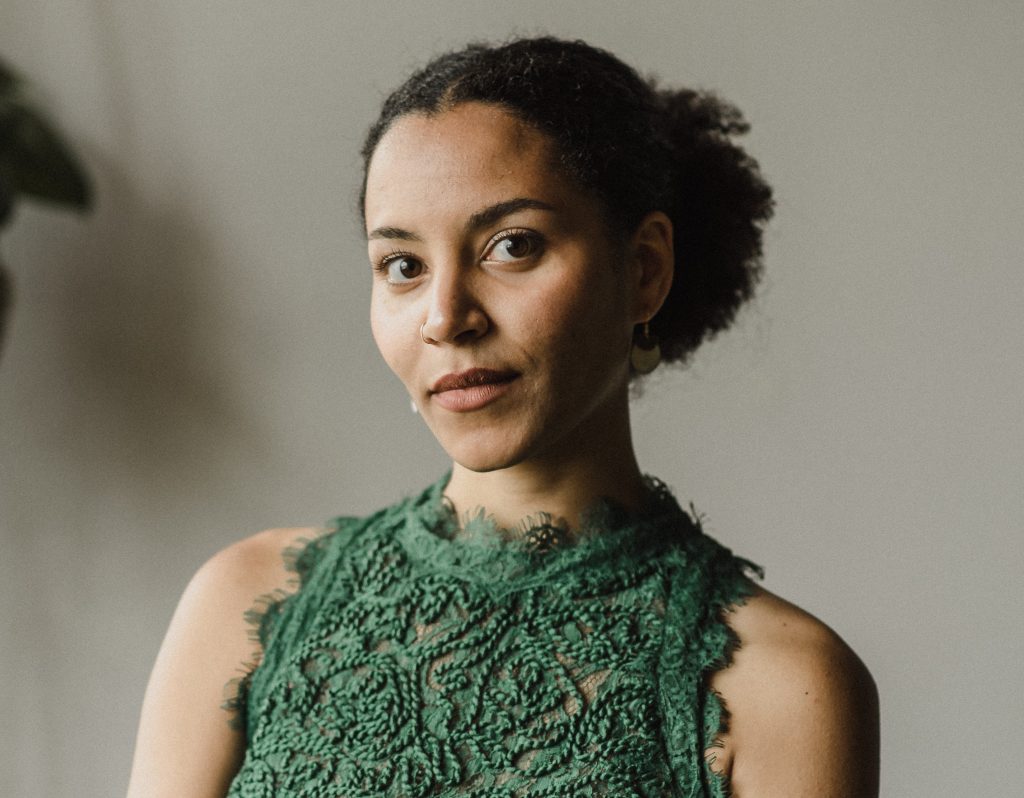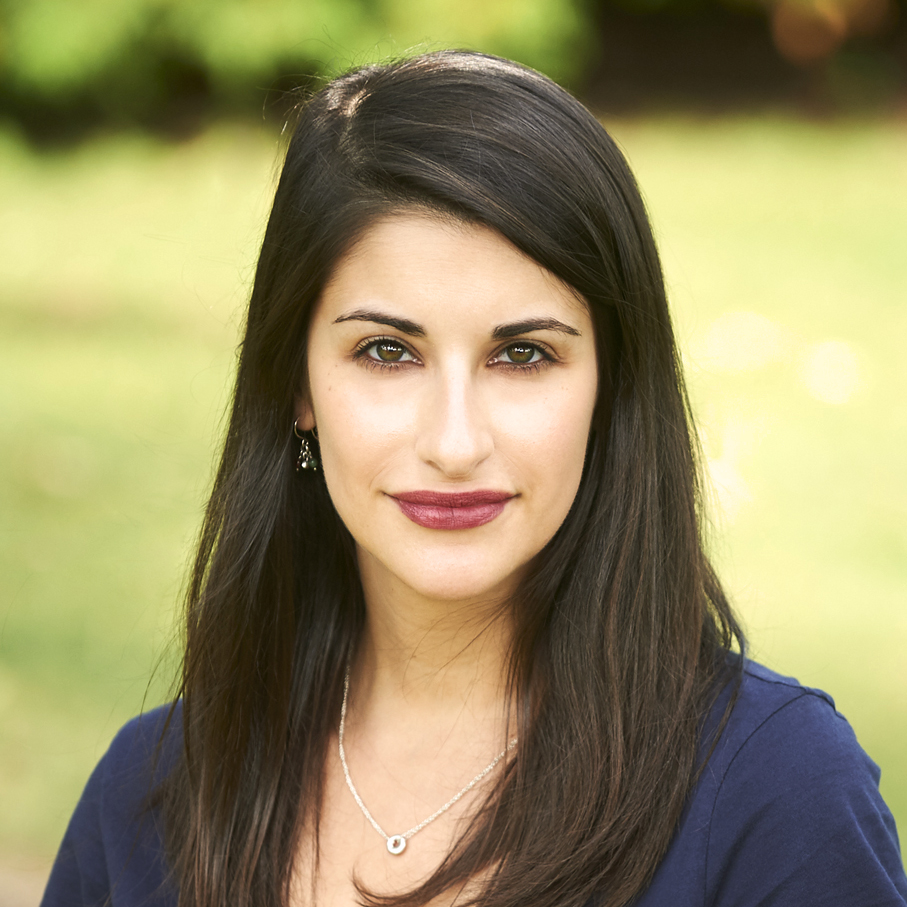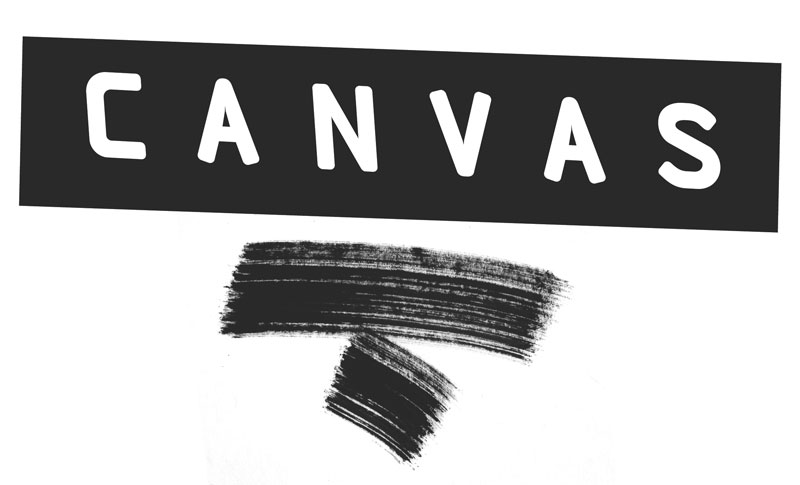Periphery is an evocative photographic and film project that bears witness to ethnic diversity in the Jewish community. Sharing narratives from individuals of multiracial and multiethnic backgrounds, Periphery creates space to look, listen, and learn from participants as they share their experiences and explore ideas of representation, intersectionality, ethnicity, race, and sexuality. Periphery also draws our attention inwards and invites us to examine how we foster and support a broader and richer view of the Jewish community. Together, these voices call us to act up on our Jewish values and create Jewish spaces that are truly inclusive of the individuals that seek a sense of place within them.
The exhibition and film were produced by the Ontario Jewish Archives, in collaboration with No Silence on Race and the Prosserman JCC. The exhibition is on view at the Prosserman JCC until March 20, 2022 and the film is accessible at peripheryexhibit.org. The project was made possible with a grant from the Kultura Collective.
We caught up with Sara Yacobi-Harris, the director and filmmaker of Periphery to learn more about the project, her work with No Silence on Race, creating a documentary during the Covid-19 pandemic and who’s inspiring her in Toronto lately.
Kultura Collective: Hi Sara. Could you tell us a bit about you and your practice?
Sara Yacobi-Harris: I am a multidisciplinary artist, filmmaker, media professional and community organizer. I have been making films since 2016 with a particular interest in exploring and capturing intersectional identity and belonging using spoken word, movement and dance as forms of expression. In 2017, I produced and directed Who is a Jew?, a documentary exploring the cultural experiences of Black Jews and Jews of Colour in Toronto. I am also the director and producer of Periphery. I have worked at the Toronto International Film Festival (TIFF) and CBC’s unscripted department. This past Fall, 2021, I graduated from the University of Toronto with a Masters of Education (M.Ed) in Social Justice Education
KC: Could you please share a bit more about your work with No Silence on Race?
Sara: No Silence on Race is a movement born of the necessity for both racial equity and inclusivity within Canadian Jewish spaces. In addition to our open letter, we devised 9 pillars as a foundation and guide intended to support Jewish congregations, federations, foundations, organizations, nonprofits, and initiatives in their transformation towards greater inclusivity and equity. Our vision is to build inclusive Jewish spaces that are reflective of the diversity that exists within our communities and throughout our history using education, art and culture as our mediums. Our platform provides a space for Jews of colour to share and celebrate their unique cultures, complexities, and perspectives with one another and the broader community. Through advocacy art & culture and JOC community building, No Silence on Race is encouraging Jewish individuals and institutions to adopt a more holistic understanding of both Jewish history and identity. In doing so, we seek to ensure that the voices of Jews from minority communities are recognized and heard.
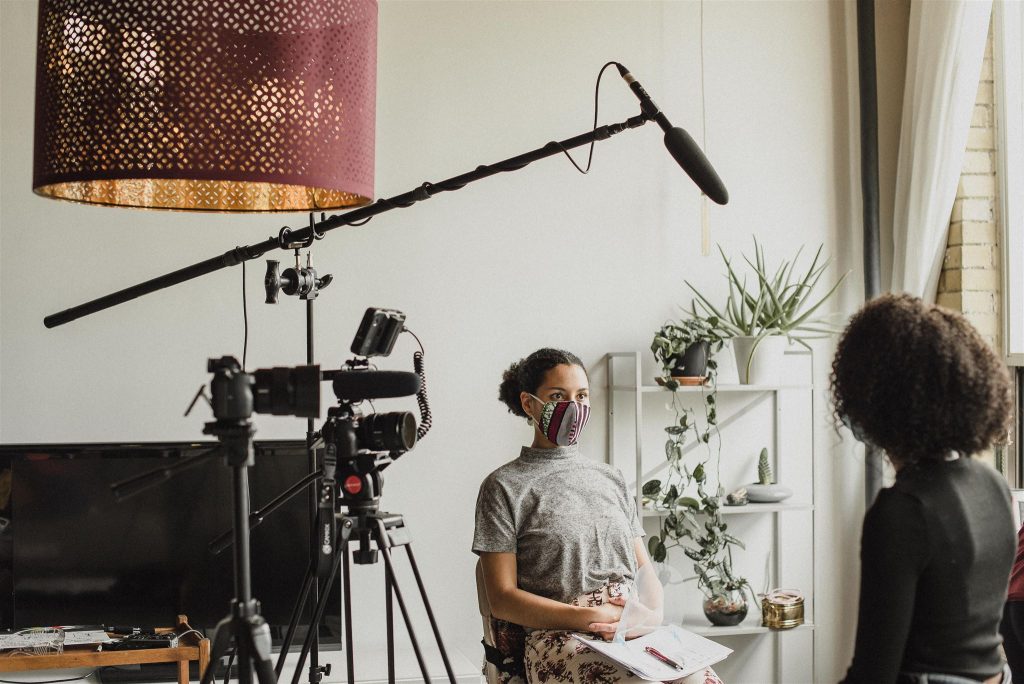
KC: How did you get involved in Periphery? What attracted you to this project?
Sara: In the Fall of 2020, the OJA team approached us and asked if we would be interested in partnering on a grant application to create a portrait series featuring Jews of Colour in Ontario. We agreed and also pitched the idea of a short film in order to further bring individual stories to life.
Periphery was a natural evolution and continuation of my first documentary project in 2016 titled Who is a Jew? As the momentum for No Silence on Race grew over the last year, it became a natural fit for our team to continue our advocacy and education work through art, creating content to bear witness to the ethnic diversity in the Jewish community. Sharing narratives from individuals of multiracial and multiethnic backgrounds, Periphery creates space to look, listen, and learn from participants as they share their experiences and explore ideas of representation, intersectionality, ethnicity, race, and sexuality. Periphery also draws our attention inwards and invites us to examine how we foster and support a broader and richer view of the Jewish community. Together, these voices call us to act up on our Jewish values and create Jewish spaces that are truly inclusive of the individuals that seek a sense of place within them.
KC: Could you share a bit more about the relationship of the film and photographs to the Ontario Jewish Archives?
Sara: In the fall of 2020, the Ontario Jewish Archives (OJA) approached No Silence on Race (NSOR) with a proposal to commission and fund a portrait series and short film exploring the rich ethno-racial diversity that exists within the Ontario Jewish community. Recognizing that the stories and histories of multi-ethnic Jews were missing from the archive’s repository, the OJA and NSOR discussed the shared desire to broaden and deepen the ethnic diversity of their archival collection. The partnership resulted in the production of Periphery.
KC: Periphery was created during the Covid-19 pandemic. What were the unique challenges and opportunities working on this project during that moment in time?
Sara: Yes, Periphery is a Covid-19 production! As we set out to create a timeline for the project, we had to delay filming a few times in the spring of 2021. This gave us more time for research in the pre-production stage which enabled us to take even more time to get to know our cast and deliver a strong final film and portrait series. We also had to ensure strict Covid-19 protocols on set including masks, visors and goggles so it was both an odd and funny experience meeting all of our participants for the first time in person looking fairly unrecognizable! We managed to find fun ways to engage with our participants even though they could not read any of our facial expressions while filming. Our fantastic unit manager, Donna Bernardo-Ceriz, and Akilah Allen-Silverstein and Yoni Belete from NSOR were all an integral part of ensuring our entire production went smoothly.
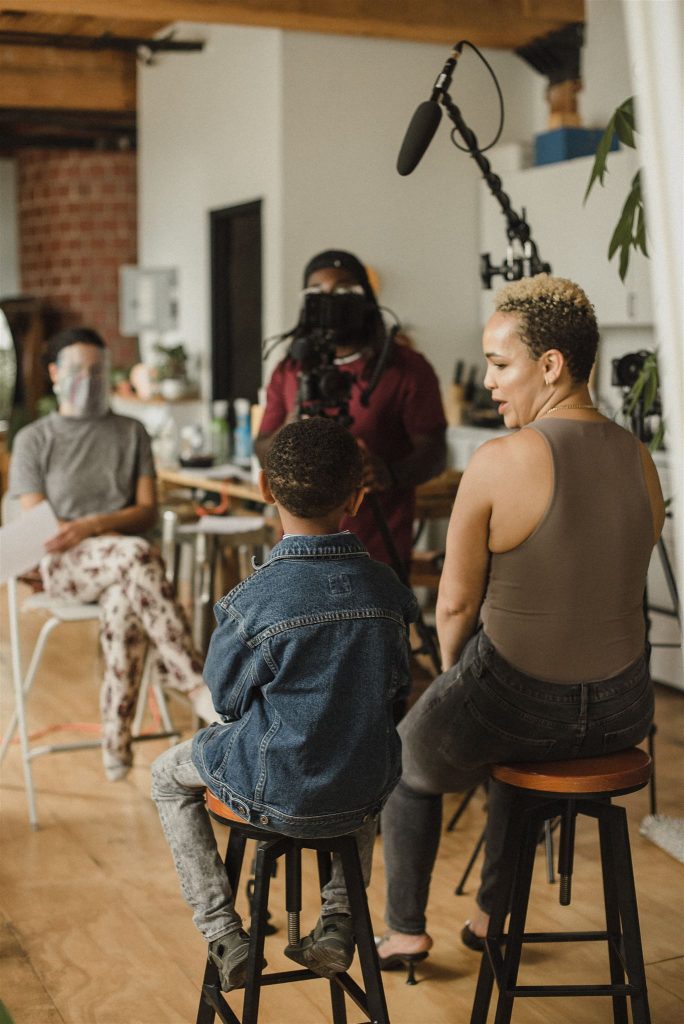
KC: What else are you working on right now?
Sara: Right now, the No Silence on Race team in partnership with the OJA is seeking to create original curriculum to support educational engagement with the film and portrait series. The curriculum will be a resource for both Jewish and non-Jewish schools across North America, enabling educators and students to engage in a more nuanced discussion about the complexities and intersectionality of Jewish identity. Moreover, the curriculum will highlight and tackle issues of discrimination and racism that Jews of Color (JOC) face within Jewish community spaces. For non-Jewish students, the curriculum also focuses on antisemitism and hate as it is experienced by JOCs, while also dismantling stereotypes of who is a Jew.
Our goal is to create foundational change through culturally responsive pedagogy that utilizes learners’ own cultural references and lived experience in their understanding of Jewish identity. Through original media content produced by No Silence on Race, our goal is to create curriculum packages that include written, audio and video content in order to facilitate discussion, dialogue and learning about Jewish identity that will be appropriate for both Jewish and non-Jewish learners across North America.
KC: Who is inspiring you in Toronto right now? What other Jewish creatives should we know about?
Sara:
- Gisun (Giselle Hausman): @gisunmusic
- Ella Cooper: @ellacoopercreates
- Lishai Peele: @lishaip
- Devyani Saltzman: @devyanisaltzman
- Nobu Adilman: @misternobu
- Asha Allen-Silverstein: @beautyco.to
KC: What’s inspiring you Jewish-ly lately?
This year is the year of Shmita and it has inspired me to really think about the ways in which it is possible to actually rest amidst the chaos and busyness of everyday life with balancing work, creating, producing and maintaining. I have been inspired to think about what rest and renewal can look like in this context and I am challenging myself to live this year with a foundation of shmita. It’s been a very worthy challenge!!
KC: It’s time for the lightning round!
- Poppy vs sesame seed? Poppyseed bagels
- Hummus vs baba ghanoush? Hummus
- Poppy seed vs prune? Prune Hamantaschen
- Rosh Hashanah vs Simchat Torah? Rosh Hashanah
Sara Yacobi-Harris is the founder of No Silence on Race. She is an artist, filmmaker, media professional and community organizer. Sara is the director and producer of Periphery. She holds a Masters of Education (M.Ed) from the Ontario Institute of Studies in Education at the University of Toronto. Previously, Sara has led equity, inclusion and anti-racism strategy and policy implementation, as well as focused community outreach, talent development and festival partnerships at the CBC. Sara has also worked on several TV and digital productions at the CBC in the Unscripted department and has written for the CBC. In 2017, Sara produced and directed a documentary film titled Who is a Jew? The documentary explores the roots of cultural and ethnic identity and the experience of Black Jews and Jews of Colour in Toronto. Sara has worked with the Ontario Jewish Archives, Toronto Jewish Film Foundation, Hillel Ontario, and The House and has spoken at Jewish conferences, seminars and events including the national summit on antisemitism. Follow her at @sara.iasha.
The Ontario Jewish Archives, Blankenstein Family Heritage Centre (OJA) is the largest repository of Jewish life in Canada. Founded in 1973, the OJA, a department of UJA Federation of Greater Toronto, acquires, preserves, and makes accessible the records that chronicle our province’s Jewish history. The collection documents organizations, individuals, synagogues, schools, summer camps, leisure, athletes, and businesses. There are many ways to explore the OJA’s collection and learn about the province’s Jewish past. You can make an appointment to look at photographs, films, Yiddish newspapers, hand-written correspondence, and even an original Superman drawing! Through exhibitions, programs, research assistance, and walking tours, the OJA tells the stories of Ontario’s Jewish community.
No Silence on Race is born out of the necessity for racial equity and inclusivity in Jewish spaces in Canada. Many of us have shared our stories in Jewish spaces about being Black Jews and Jews of colour. We have written articles and participated in conferences and panels. While we believe that conversation, listening, and self-reflection are important first steps to creating anti-racist, inclusive and equitable Jewish spaces, we look to the entire Jewish community in Canada to challenge ourselves to do more and to envision the path forward. We have designed 9 pillars as a guideline for how organizations can begin this work. We encourage all organizations to be intentional and creative in their implementation. Ultimately, organizations know and understand their company best, so we look to our community to create their own timeline and plan for implementation with the goal of creating meaningful impact and change.

